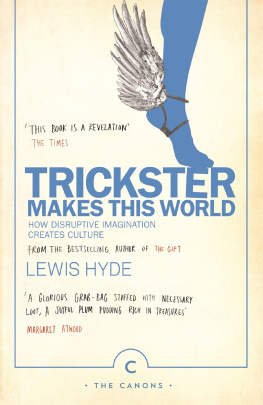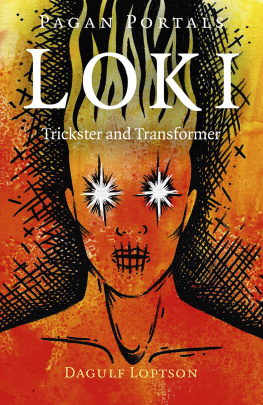2019 by Nimachia Howe
Published by Utah State University Press
An imprint of University Press of Colorado
245 Century Circle, Suite 202
Louisville, Colorado 80027
All rights reserved

The University Press of Colorado is a proud member of the Association of University Presses.
The University Press of Colorado is a cooperative publishing enterprise supported, in part, by Adams State University, Colorado State University, Fort Lewis College, Metropolitan State University of Denver, Regis University, University of Colorado, University of Northern Colorado, University of Wyoming, Utah State University, and Western Colorado University.
ISBN: 978-1-60732-977-0 (hardcover)
ISBN: 978-1-60732-978-7 (paperback)
ISBN: 978-1-60732-979-4 (ebook)
https://doi.org/10.5876/9781607329794
Library of Congress Cataloging-in-Publication Data
Names: Howe, Nimachia, author.
Title: Retelling trickster in Naapi's language / Nimachia Howe.
Description: Louisville : University Press of Colorado, [2019] | Includes bibliographical references and index.
Identifiers: LCCN 2019020711 | ISBN 9781607329770 (cloth) | ISBN 9781607329787 (pbk.) | ISBN 9781607329794 (ebook)
Subjects: LCSH: Naapi (Trickster) | Siksika IndiansFolklore. | Indians of North AmericaFolklore. | Siksika language.
ification: LCC E99.S54 H69 2019 | DDC 398/.4508997352dc23
LC record available at https://lccn.loc.gov/2019020711
Cover illustration John Nieto, 19362018. Coyote. 48" 60". Reproduced with permission.
of the Northwest Plains?
For almost two-and-a-half centuries, visitors to the Blackfoot homeland, which was traditionally in the Northwest Plains and currently still spans Alberta, Canada, and the US state of Montana, have heard about Naapi and his comparable characters in other Indigenous Peoples traditions. A diverse set of collectors gathered Naapi stories, an important genre that is part of a large array of stories outlined in the Blackfoot creation cycles. This study looks as some of the features and uses of Blackfoot language in Naapi story contexts as he connects the land to the People; Naapi predates the arrival of the People and, as a child of Sun and Moon, has an entire genre of stories devoted solely to his episodic creativity. Naapi stories explain how he established the landscape with help from Iihtsiptapiiyopa, the one through whom we live, universal energies coordinated with atmospheric and astral forces, often called spirits in English. All are considered Persons proper in Blackfoot because they are infused with creative power, the same power Naapi uses to shape and bring forth life to the homeland so People and other beings may live in it. People repeat the knowledge of this space and of the entire landscape where Naapi stories occur to mark out a home perfectly created for them.
Naapi also connects Peoples land to life values. In Naapi stories, his actions also inform and shape Peoples values, humor, creativity, ethics, morals, codes, and potential futures with which People can identify and can claim. Naapis interactions with other living Beings include a multiplicity of actions with a range of Beings, such as birds, bears, winds, waters, spirits, rocks, seeds, mountains, and berries, to name but a few. He is the mediator among Peoples, plants, animals, and the elemental forces of creation, the accounts of which are told in story. When and where these stories occur is of paramount importance because in each, he creates spaces for all forms of living Beings in situ and thus connects original Peoples to the beginnings of time, as it is re-created over time in a place; this is the definition of the homeland. Hereto is the source of why many Indigenous languages identify humans as original People; it is an expression to distinguish us from all the rest of the surrounding life forms and not to mean the People in an ethnocentric sense, for the emphasis should be on the People instead as a distinguishing fact. All other forms of life are alive and thus share with People intelligence and will, so stars, winds, and thunder, for instance, speak to People, and Naapi is an important go-between as these forces reach out to communicate with us. Blackfoot and other Algonquian/Algonkian languages use oral tradition styles, devices, and speech acts that demonstrate a human interest in, and a desire to receive and comprehend, these messages.
This study of Naapi stories is an effort to decode some of these methods or systems, guided by a few questions. How, or do, Naapi stories and the ways Blackfoot use language about Naapi express core values that emerge from these land-based experiences? What do Indigenous Plains Peoples and Algonquian/Algonkian Peoples stories have in common with the homeland? How is the traditional Indigenous land ethic taught with Naapi stories? What, if any, relevance does Naapis name have in this? How are universal energies of creativity, adaptation, and change, accounted for, if they are? This study reviews storytelling occasions and also questions extra-linguistic material. It combines some story analyses with a consideration of the metaphysical aspects of Naapi, as reported and expressed in the Blackfoot language. Naapi story analysis is an extensive subject that deserves its own book, so only a few examples are explored in this discussion. Statements put forth about Naapi stories are nonetheless drawn from a much larger body of Naapi stories and are thematically and linguistically consistent with them. As such, this study is organized around themes that introduce readers to the physical and metaphysical dimensions of Naapi and considers how these dimensions are expressed in the Blackfoot terms and expressions used to illustrate his essential multidimensional changeability (e.g., Naapis many names).
To address change factors in the written record, this book also examines the ways Blackfoot and other Algonquian/Algonkian languages are described in very early accounts. Journals by missionaries, trappers, commissioners, traders, vacationing tourists, and the like document some of the earliest collections of Naapi stories, beginning with Peter Fidler in 1792 and continuing to the present. Almost a century after these initial collections were accumulated, linguists began to study vocabulary lists and Naapi story compilations, with some of the earliest being several works by the linguist C. C. Uhlenbeck (18661951), whose work after 1900 includes several published collections that amassed multiple stories. For the remainder of the past two centuries, there has been, generally speaking, a separation between linguists work (e.g., structural anthropology)specializing in diagrams, grammatical breakdowns, and descriptions into classificatory systems and categories, such as works by Donald Frantz (e.g., Blackfoot Grammar, 2017)and writers who focus on Naapi or Trickster and their Algonquian/Algonkianrelated stories (e.g., Grinnells Old Man Stories, in Blackfeet Indian Stories [1926]). Uhlenbeck and J.P.B. de Josselin de Jong (18861964) excepted, story collections are rarely linked to linguistic analyses, and language studies likewise limit references to the stories to excerpts or separate statements only and do not analyze entire stories, much less multiple stories. As such, attempts to answer questions about who Naapi is rely on generally abstracted linguistic approaches or on interpretations and tellings of individual Naapi Trickster stories, with little cross-conversation. Many of these efforts lack detail or large overviews of how Naapi earned his Trickster title, since it takes the body of them together to see how he changed through time, so that is my focus.


 The University Press of Colorado is a proud member of the Association of University Presses.
The University Press of Colorado is a proud member of the Association of University Presses.









